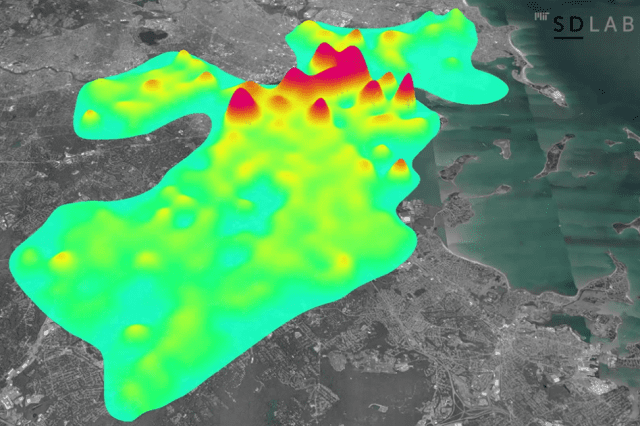If we want to pave the way for a greener future, making our cities more energy-efficient is a clear must. However, it’s hard to make your buildings more energy-efficient when you don’t know when and how this energy is being consumed. With this in mind, MIT researchers have created a powerful new tool for energy monitoring: a citywide urban building energy model of unprecedented scale and detail.

Image: Carlos Cerezo, Jamie Bemis, Tarek Rakha, and Christoph Reinhart/MIT Sustainable Design Lab
The model was designed by Christoph Reinhart, associate professor of architecture, and Carlos Cerezo, a PhD student in the Building Technology Program. It estimates the gas and electricity demand of every building in Boston (about 100,000 of them) every hour on the year.
“Nobody has ever modeled a city the size of Boston at this level of detail,” Reinhart says. “It’s also the first time that these data are being used by a city to guide energy policy decisions.”
The idea is to make our energy systems smarter, seeing when and where improvements are needed the most and how the electricity grid should adapt to better deal with these needs.
“Community energy solutions such as targeted energy efficiency, district energy, microgrids, local energy generation, and energy storage represent an opportunity to fundamentally change the way our energy system works,” says Austin Blackmon, chief of energy, environment, and open space for Boston, “but to get there we need a better understanding of the existing system and a way to identify the most promising solutions.”
What they wanted to do is not only add individual solutions such as adding rooftop photovoltaics, but to look for holistic solutions. Ultimately, they want to develop better combined heat and power (CHP) systems that service multiple buildings. Thus, they can generate building demand predictions and link them to energy supply models. For this, they propose and advocate a combination of CHP, photovoltaic, battery storage, and ground source heat pumps could reduce greenhouse gas emissions and offer lower-cost alternatives to current centralized energy supply scenarios. This is where the model helps the most.
“If you have a building consuming a lot of electricity at certain hours, you need buildings around them that can use that waste heat,” Cerezo says. “Our model is built for figuring out where those things happen.”
Of course, creating the model isn’t easy, as all buildings have to be modeled. They divided the 92,000 buildings in Boston into 48 different “archetypes,” and 12 different use categories (e.g., residential or office). They then assigned various characteristics to each archetype, accounting for heating and cooling systems, electricity use, thermostat settings, time occupancy, wall and roof structure, and so on.
They hope that the model will be considered by policymakers and planners especially in problem areas – buildings driving peak electricity demands. Personally, I think that developing similar models are crucial to green our cities, and I hope more will be developed for different cities in the near future.
Was this helpful?



